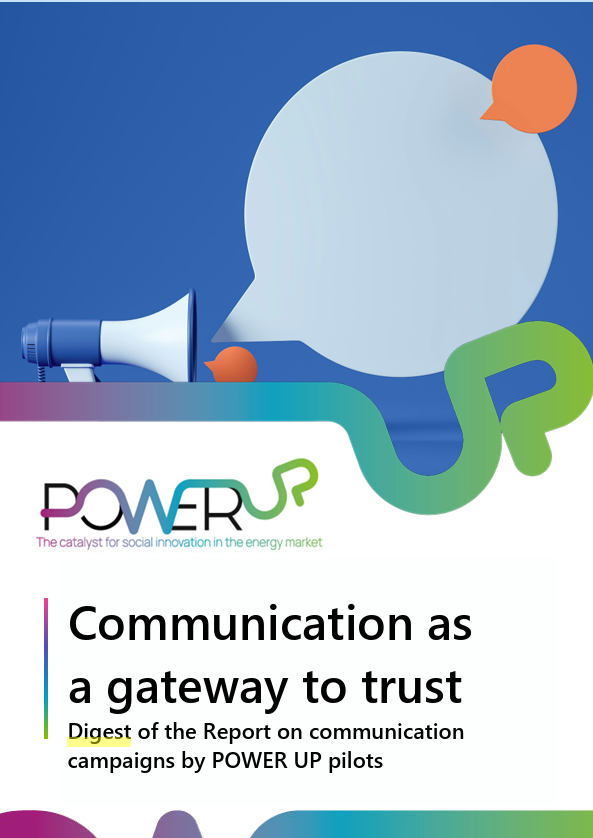In regions grappling with energy poverty from the North to South of Europe, information on access to energy or support to energy retrofitting isn’t just helpful—it’s transformative. The municipalities involved in the POWER UP project recognised this early on. Over the past years they crafted multi-channel campaigns both to deliver tailored support to households most in need and to raise general awareness on the social energy player they’ve designed.
The four pilots Eeklo (Belgium), Valencia (Spain), Roznov pod Radhostem (Czech Republic) and UCSA municipalities in Campania area (Italy) have designed renewable energy schemes that will allow low-income households to take part in the energy transition. From collective self-consumption schemes to municipally pre-financed social cooperative shares, the range of “social products” to be marketed was broad. Contrary to conventional commercial offers, each scheme had been validated with residents in vulnerable situations through a series of co-creation workshops.
To encourage residents to join the scheme or to consult energy support services like Roznov’s brand-new one-stop shop, each pilot had its very own communication strategy. However, a number of commonalities can be drawn:

Here are five additional tips for successful communication campaigns in an energy poverty context (but not only):
1. Messages echoing trusted voices
Strategic messages weren’t top-down mandates. Instead, they emerged from co-creation workshops with residents that had the lived experience in energy poverty —identifying real barriers like complicated bills, mistrust, or simply “not knowing where to start. Trust became the cornerstone of communication.
2. “Door‑to‑door” and whatsapp – the human factor
In many pilot cities, outreach meant boots on the ground—door-to-door visits, whatsapp, in-person stands —alongside brochures, bill inserts, and local radio. These human interactions were critical. All pilots recognized that they were the most effective means as they respect local ways of talking and real-life concerns.
3. Energy kits & tailored guides
In certain pilots participants received user-friendly “energy kits”—LED bulbs, faucet aerators—and step-by-step guides in adapted language to reduce energy use. Even though vulnerable residents may often be the ones with the mist energy efficient behavior: These tangible tools and advices – often also central in the one-stop-shops – provided additional control and turned households into change agents.
4. Digital empowerment: apps & alerts
In Eeklo (Belgium), the cooperative Ecopower’s EnergyID platform let users monitor consumption and set personal thresholds. In case of overstepping, they’d receive real-time alerts—a helpful way to prevent bill shock and foster billing literacy.
5. Community-based communication
Social gatherings like Eeklo’s Soup meetings (Buurtsoépes) or Valencia’s info sessions on how to access social tariffs allowed participants to connect with neighbors and municipal staff while getting equipped for a better energy management. POWER UP pilots confirmed that face-to-face group formats offer emotional support and practical learning in ways that mass mailings simply can’t provide.

READ MORE: If you’ want to better understand how each of the pilot’s communication campaigns unfolded and how they build energy-literate communities, check out the report “Communication as a gateway to trust”.
